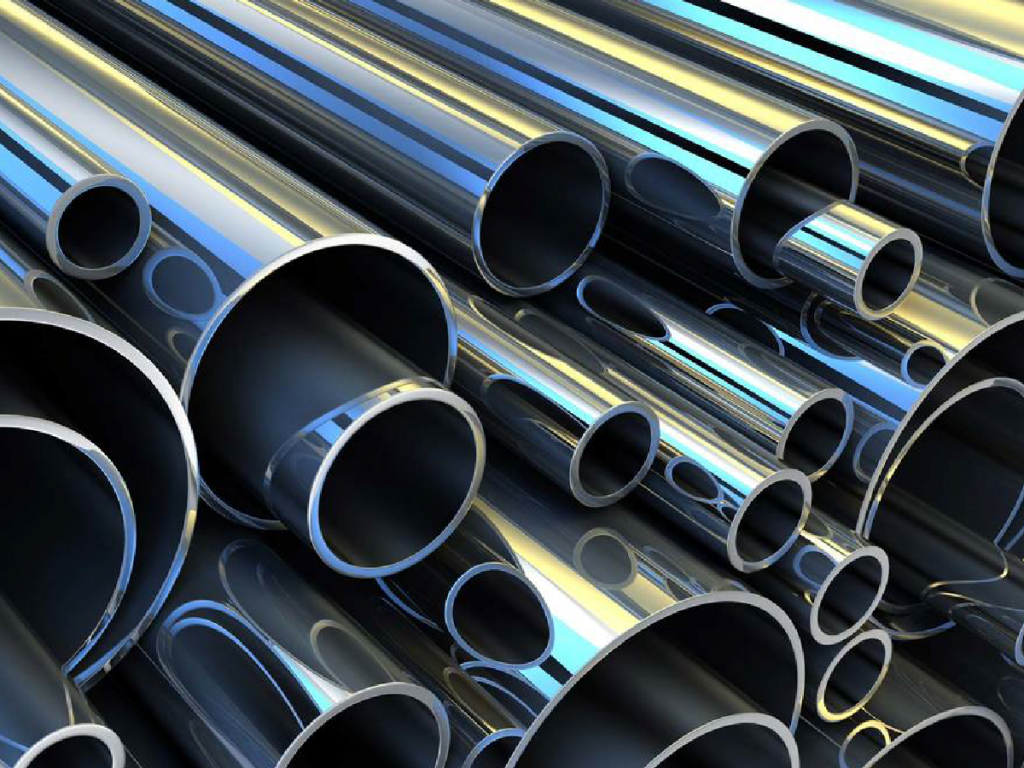Steel is an iron-carbon alloy containing other alloying elements, which give it specific mechanical properties for use in the metal-mechanical industry.
The main elements of composition are Chrome, Manganese, Nickel, Vanadium, Molybdenum, Copper, Sulfur and Phosphorus. These elements, according to their percentage, offer specific characteristics for certain applications.
Mechanical properties of steel
- Wear resistance. It is the resistance that offers a material to be allowed to erode when it is in contact of friction with another material
- Tenacity. It is the capacity of a material to absorb energy without producing cracks.
- Machinability. It is the facility that has a material to allow the machining process by removal of chips.
- Hardness. It is the resistance offered by a material to allow itself to be penetrated.
Alloy elements in steels
- Aluminium - Al : Aluminum is mainly used as a deoxidizer in steel processing. It also reduces grain growth by forming oxides and nitrides.
- Azufre - S : Sulfur is considered a detrimental element in steel alloys. However, it is sometimes added up to 0.25% to improve machinability.
- Cobre - Cu : Increases the corrosion resistance of carbon steels
- Cromo - Cr : It is ferrite forming, increasing the depth of hardening. It also increases resistance to high temperatures and prevents corrosion.
- Manganese - Mn : It is an austenite former, also used for deoxidation.
- Molybdenum - Mo : Increases the depth of steel hardening as well as its resistance to impact. Austenitic steels contain Molibdenor to improve corrosion resistance.
- Nickel - Ni : It is the main form of austenite, which increases toughness and impact resistance. Titanium - Ti : It is used to stabilize and deoxidize steel.
- Vanadium - V : It facilitates the formation of small grains and reduces the loss of resistance during hardening, thus increasing the hardening capacity. It forms carbides that impart resistance.
Low carbon steels
From 0.08 to 0.25% in weight of carbon They are soft but ductile, very workable.
Applications:
- Piping.
- Structural elements in buildings
- Reinforcement rods
- Ship shells
According to the SAE standard, carbon steels are called: 10XX, where XX is the percentage of carbon
Medium carbon steels
Between 0.25 - 0.60% in weight of carbon. They are stronger than low carbon steel, but less ductile. They are used in the manufacture of parts that require high mechanical and wear resistance.
Applications:
- Gears.
- Axes.
- Bearings.
Alloy steels
It is considered an alloy steel when it contains the following elements Mn, Si, Cu, Ni and Cr, in a determined percentage and not as residual.
They are mainly used when intended:
- develop maximum mechanical properties with minimum distortion and cracking
- promote in a special degree: resistance to tempering, increase tenacity, decrease sensitivity to notching
- improve machinability in hardened and tempered condition compared to a carbon equal % steel in the same condition
Typical grades and applications
Al Ni 23XX 25XX
Ni increases the toughness of the alloy; but since hardenability cannot be improved, another alloying element (Cr, Mo) must be added. For this reason they are practically not used.
Al Cr-Ni 31XX 32XX 33XX 34XX
Great tenacity and hardenability; but excessive Ni makes machinability difficult.
Al Mo 4OXX 44XX
Slightly increases hardenability.
Al Cr-Mo 41XX
They have 1.00 %Cr and 0.15 to 0.30 %Mo. They are used for nitriding, high resistance screws, etc.
Al Cr-Ni-Mo 86XX
They have 0.40 to 0.70 %Cr, 0.40 to 0.60 %Ni and 0.15 to 0.30 %Mo. They are the most used alloys because of their good hardenability. For example: SAE 8620 for hardening and tempering SAE 8640
Al silico—Mn 92XX
They possess approximately 1,40 %Si and 1,00 %Mn. They are spring steels; they have excellent fatigue resistance and hardenability. (For less demanding springs, the SAE 1070 is used).
Tool Grade Steels
They are used to manufacture tools, cutting heads and machine modeling. They contain elements that provide high resistance, hardness and durability.
Applications:
- Cutters.
- Drills.
Typical grades and applications
W: Water-temperable: they do not contain alloying elements and are high % of carbon (0.75 to 1.00%). They are the most economical and are used mainly in wicks. In general, they have limitations in terms of diameter, due to their hardenability specification.
For cold work:
O: They are only suitable for cold work because as the temperature increases, the hardness decreases.
A air-tempered. They do not support oil tempering since they would be figured; they are used for intricate shapes (matrices) since the high chrome content gives homogeneous tempering.
D: high alloy. They contain high % of carbon to form Cr carbides (1,10-1,80 %C). High resistance to wear.
For hot work: H
Fast steels:
T tungsten based
M based on molybdenum
All three maintain their red hardness (important in blades); they have stable carbides at high temperature; Cr increases hardenability since it is dissolved; tungsten and molybdenum are the 6 carbide formers. The most popular is known as T18-4-1, which indicates contents of W, Cr and Mo respectively. S: Steel for tools that work in shock. Easily hardened in oil. They cannot be used in large sections or intricate shapes.
As producers of custom-made metal parts, produced by the investment casting technique, we can participate in projects of parts with very different characteristics.
Contact our team to identify the elements necessary for your custom metal parts production project to have the characteristics you are looking for for your company.

